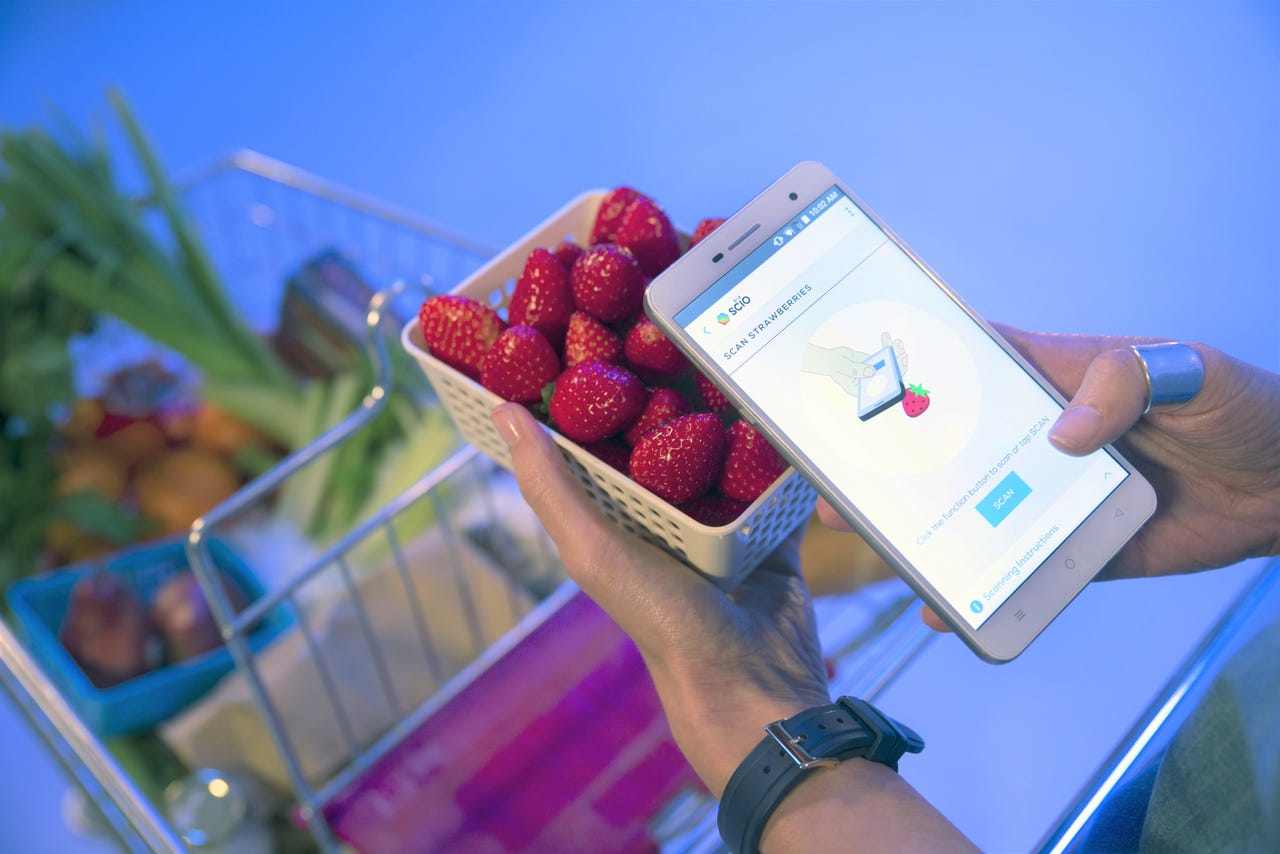This phone is so smart it can scan your lunch and tell you what's in it


The H2 phone uses its near-infrared spectrometer to beam light at an object while apps analyze the reflected spectrum to identify, say, the sugar content of strawberries.
A forthcoming smartphone from Chinese firm Changhong comes with an inbuilt material sensor to let its owner scan and analyze the chemical makeup of almost any object.
Changhong's H2 smartphone, on show at CES 2017 last week, taps into material-sensor technology from Consumer Physics, which first launched its SCiO standalone handheld molecular scanner in 2014.
CES 2017
A smaller version of the SCiO sensor has been added to the back of the H2 smartphone, which will be sold in China and the US this year. The feature has a number of potential uses, from testing the authenticity of drugs and cosmetics, to telling how tasty a piece of fruit is.
Given a recent warning from City of London police about cyanide in counterfeit cosmetics made in China and sold online to Brits, the feature could help consumers avoid dangerous products.
To analyze an object's material composition, the phone uses a near-infrared spectrometer that beams light at an object while apps on the phone analyze the reflected spectrum to identify its chemical makeup.
As reported by ZDNet's sister site, CNET, Consumer Physics demonstrated the phone at CES detecting a fake Viagra pill. The scan itself is snappy, supported by easy-to-use apps. Tested on an apple, the phone displayed its sugar content according to its Brix level. It can also be used to measure a person's body-mass index.
Whether the material scanner becomes a staple smartphone sensor alongside cameras and GPS remains to be seen, but Consumer Physics hopes its newly miniaturized sensor will also find a place in other connected devices.
While the standalone SCiO scanner costs $299, the in-built sensor appears not to have added too much to the price of the Android-based H2, which will be sold in China for 2,999 Chinese yuan ($433) in the first half of the year and will arrive in the US later in the year.
Consumer Physics says the H2 is 20 percent more efficient than regular smartphones. The H2 will also feature a six-inch HD display, 16-megapixel camera and fingerprint reader.